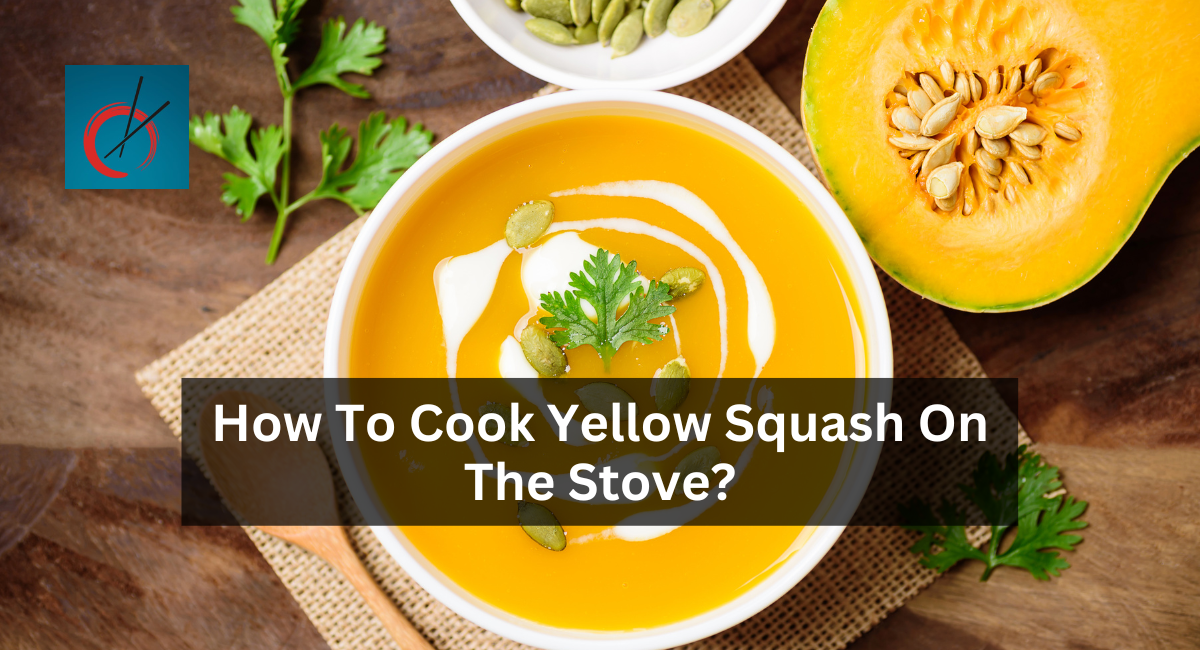Stove cooking is a simple and delectable method for preparing this vibrant and versatile vegetable. Yellow squash, with its mild, slightly sweet flavor, is an ideal addition to your meals, whether you’re looking for a simple side dish or a nutritious ingredient to incorporate into your beloved recipes. This article, will explain how to cook yellow squash on the stove.
Ingredients
- 2-3 yellow squash
- 2-3 tablespoons of butter or olive oil
- Salt and pepper to taste
- Optional seasonings: minced garlic, chopped onion, red pepper flakes, or herbs like thyme or basil
How To Cook Yellow Squash On The Stove?
Instruction
1. Wash And Prepare The Squash
To start, wash the yellow squash under cold running water. Either use a brush or your fingers to get rid of any dirt or dust. To dry them, use a clean dish towel or paper towels.
Next, remove the stem and tip ends from the yellow squash. These portions are typically stiffer and less tasty, so they should be discarded.
2. Slice The Squash
You have several options for slicing the squash. Depending on your preference and the desired presentation, you can slice them into circles or half-moons.
Commonly, the squash is sliced into segments with a thickness of between 1/5 and 1 inch. Even cooking requires uniform segments.
3.Heat The Pan
Choose a skillet or frying pan that can accommodate all squash slices without overwhelming them.
If you have a large quantity of squash, you may need to cook them in batches to prevent them from steaming instead of sautéing.
Bring the skillet up to temperature over medium-high fire before adding the squash.
4. Add Fat
When the pan is heated, add two to three tablespoons of fat. You may use either butter, olive oil, or a combination.
Butter imparts a robust, savory flavor, whereas olive oil has a neutral flavor.
5. Saute The Squash
Add the yellow squash slices to the heated skillet in a single layer. Avoid overlapping the segments to ensure uniform cooking.
Add a sprinkle of salt and a dash of black pepper to the squash. These fundamental seasonings will enhance the squash’s natural flavor.
If you want to add more flavor complexity, add minced garlic for a savory kick, chopped onion for sweetness, a sprinkle of red pepper flakes for a hint of heat, or aromatic herbs such as thyme or basil.
6. Cook The Squash
Stir the squash every now and then for 5 to 7 minutes. The temperature should be high enough to make a popping sound, but not so high that it makes too much smoke.
The squash will become softer and acquire a golden-brown hue as it roasts. The edges may caramelize slightly, lending a delicious sweetness to the dish.
7. Taste And Adjust
Taste a piece of the squash to ensure it is tender but faintly crisp. Modify the seasoning by adding salt, pepper, or your preferred herbs and spices if necessary.
8. Serve
Once the yellow squash is cooked to your liking and has been sautéed to perfection, remove it from the pan and transfer it to a serving dish.
Serve the sautéed yellow squash as a delicious side dish alongside various entrees, including broiled chicken and pasta.
Tips
- Choose Fresh Squash: Select a firm yellow squash with a smooth, vibrant rind. Avoid limp, wrinkled, and discolored squash.
- Slice Evenly: Try to cut the squash into segments of uniform thickness. Consequently, they will cook uniformly and at the same rate. If the segments are too thick, cooking time may be prolonged.
- Preheat the Pan: Before adding the fat and squash, ensure your skillet or frying pan is correctly preheated. A heated pan guarantees the squash will sear and acquire an attractive color.
- Don’t Overcrowd the Pan: If you have a large quantity of squash to prepare, cooking them in batches rather than overcrowding the pan is best. Overcrowding can cause squash to steam rather than sauté, resulting in a gelatinous texture.
- Use the Right Fat: Use the Proper Fat: Butter and olive oil are excellent sautéing options for yellow squash. Butter imparts a robust flavor, whereas olive oil has a neutral flavor. You can also combine the two to achieve the best of both realms.
- Season to Taste: Start with a sprinkle of salt and a dash of ground black pepper. Adjust the seasonings to your liking as you proceed. To enhance the flavor, experiment with various herbs and spices, such as minced garlic, diced onion, red pepper flakes, and fresh herbs.
- Avoid Constant Stirring: Although it is necessary to stir the squash occasionally to ensure even roasting, avoid stirring it constantly. Allow them to rest for some time to develop a good sear and color.
- Maintain Medium-High Heat: Maintain medium-high heat to ensure the squash sautes instead of steams. Insufficient heat can cause the squash to become gelatinous.
- Taste for Doneness: Sample a piece to determine if the squash is done. It must be tender while retaining a faint crispness. Depending on the thickness of the slices and the heat intensity, cooking times can vary.
- Serve Promptly: sauteed yellow squash tastes finest when served warm. Texture and flavor are at their zenith when food is freshly prepared.
Experiment with various seasonings and cooking methods to discover your preferred method of preparing yellow squash. The stove is the key to unlocking the maximum potential of this colorful and nutritious vegetable, whether sauteed, grilled, or pan-fried.
Read More: How To Make A Cajun Shrimp Boil?

